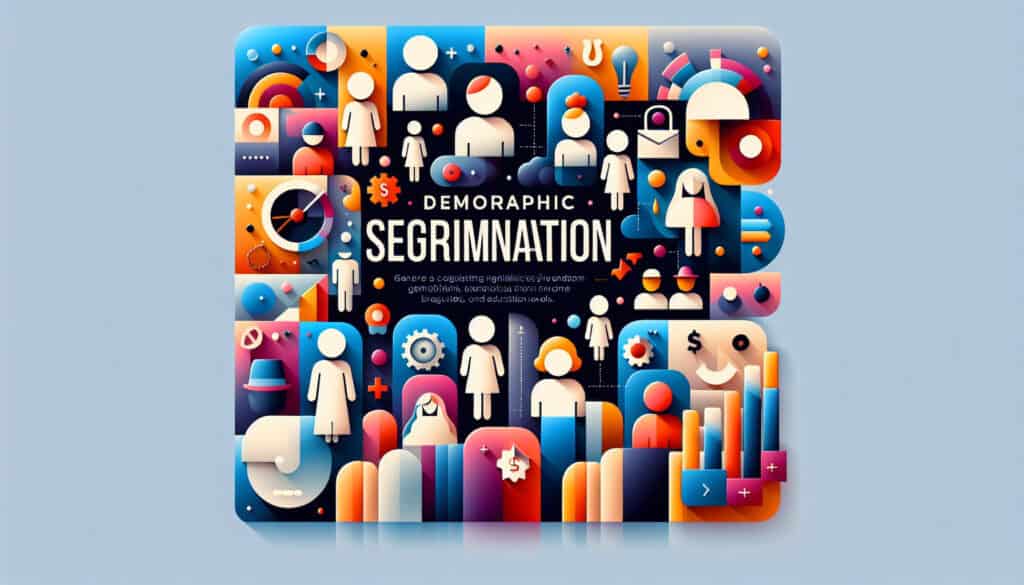A método of market segmentation where the market is divided into smaller groups based on demographic variables.
- Metodologías: Clientes y marketing, Economía
Segmentación demográfica

Segmentación demográfica
- Experiencia del consumidor, Experiencia del cliente, Estudios de mercado, Estrategia de comercialización, Diferenciación de productos, Posicionamiento del producto, Público destinatario, Diseño centrado en el usuario
Objetivo:
Cómo se utiliza:
- Customers are grouped based on quantifiable characteristics such as age, gender, income, education, occupation, and family size. This is one of the most common and simple forms of segmentation.
Ventajas
- The data is often readily available through public sources and is easy to measure; it's a simple and straightforward way to divide a market.
Contras
- Can be overly simplistic and assumes that people with similar demographics have similar needs; can lead to stereotyping; behaviors and values are often better predictors of buying habits.
Categorías:
- Clientes y marketing
Ideal para:
- Dividing a broad market into subgroups based on quantifiable population characteristics like age, gender, and income.
Demographic segmentation can be particularly advantageous in markets such as consumer electronics, where different age groups exhibit varying preferences for technology, influencing design and marketing strategies. For instance, products aimed at younger consumers may feature bold aesthetics and cutting-edge technology, while offerings for older demographics might prioritize ease of use and functionality. Industries such as automotive and healthcare also leverage demographic data; family size might dictate the design of vehicles that accommodate multiple passengers, while education level can inform communication strategies about complex medical devices. This methodology typically finds application during the initial phases of product development, where market research is conducted to identify target segments, enabling teams to align features and marketing messages with the specific needs of these groups. Participation in this process can involve cross-functional teams, including market researchers, designers, and marketing strategists, who can analyze demographic data to create user personas that guide product specifications and promotional tactics. Reports from census bureaus and market research firms often serve as readily available data sources, providing quantitative insights that enhance decision-making about product features and positioning in the market landscape.
Pasos clave de esta metodología
- Identify the key demographic variables relevant to the product or market.
- Segment the market based on the chosen demographic variables.
- Analyze the characteristics and preferences of each demographic segment.
- Develop targeted strategies for each demographic segment.
- Test and refine the strategies based on market response.
Consejos profesionales
- Utilize cluster analysis to identify unique sub-segments within demographic categories, allowing for targeted marketing strategies.
- Incorporate psychographic data alongside demographic segmentation to enhance understanding of customer motivations and preferences.
- Regularly update demographic data to reflect changing market dynamics, ensuring relevance in product design and innovation decisions.
Leer y comparar varias metodologías, recomendamos el
> Amplio repositorio de metodologías <
junto con otras más de 400 metodologías.
Sus comentarios sobre esta metodología o información adicional son bienvenidos en la dirección sección de comentarios ↓ , así como cualquier idea o enlace relacionado con la ingeniería.
Contexto histórico
1960
1980
1983
1990
1995
2000
2010
1950
1980
1980
1986
1994
1995
2000
(si se desconoce la fecha o no es relevante, por ejemplo "mecánica de fluidos", se ofrece una estimación redondeada de su notable aparición)














Publicaciones relacionadas
Calculadora de METS a calorías
Metaanálisis
Asignación de mensajes
Diagramas de modelos mentales
Fuerzas de empuje y tracción máximas admisibles
Planificación de necesidades de material (MRP)